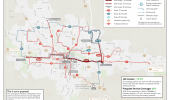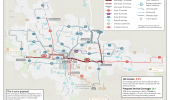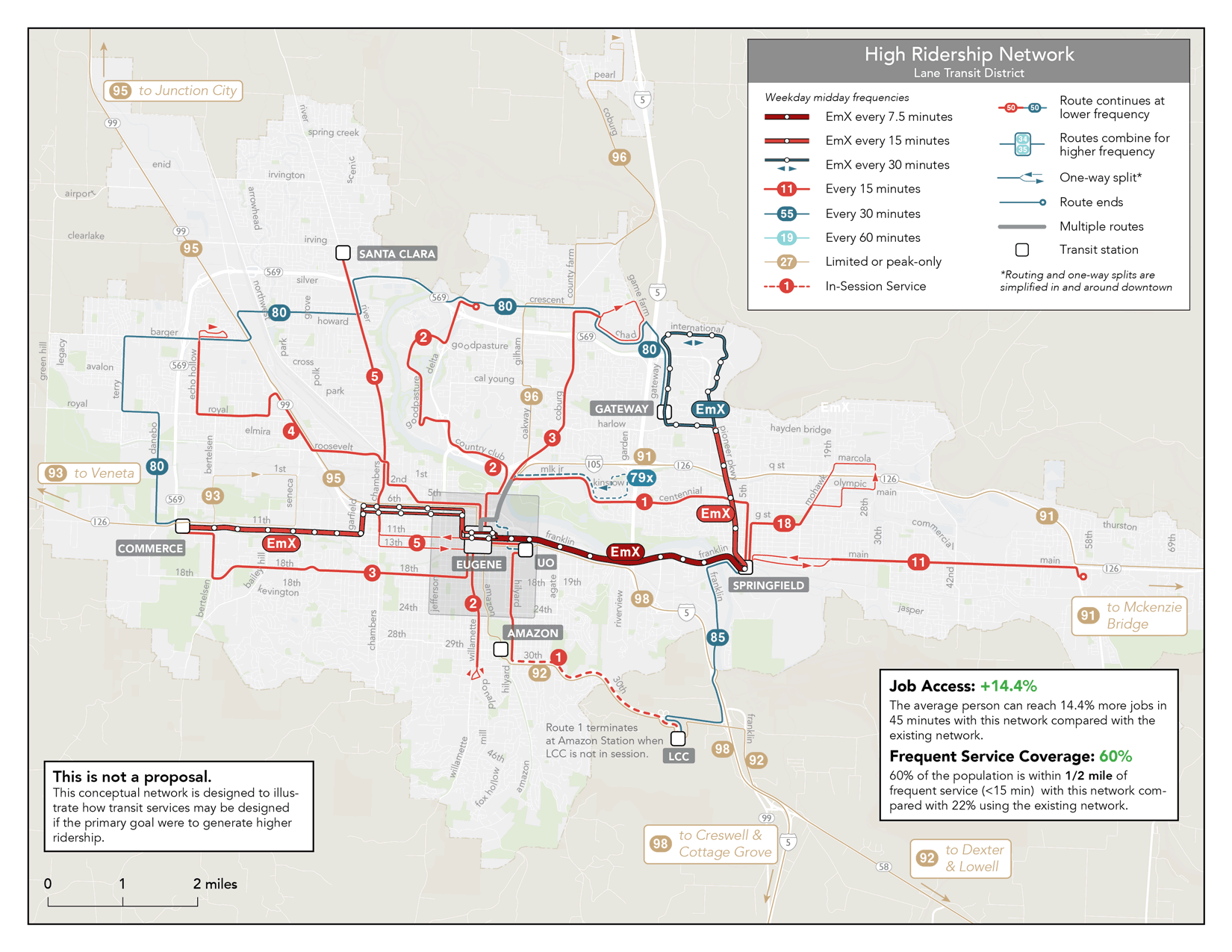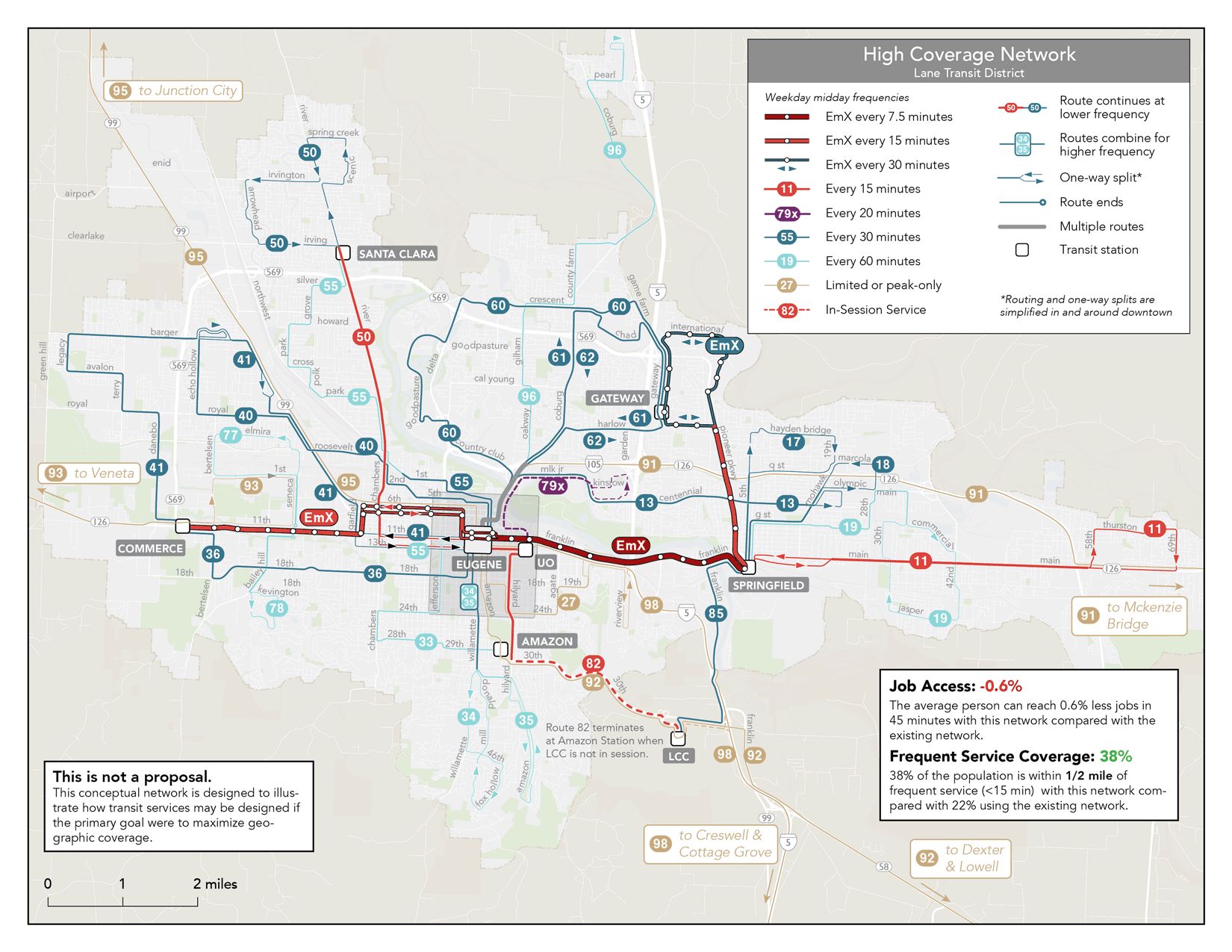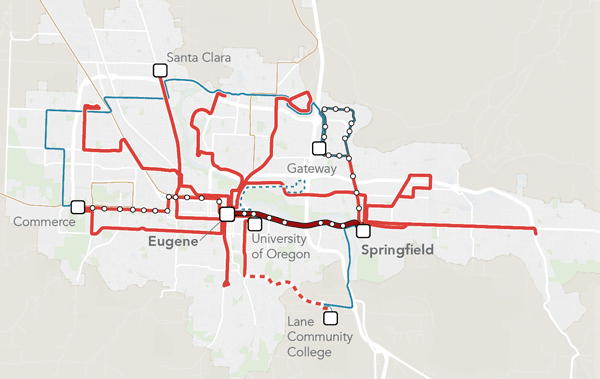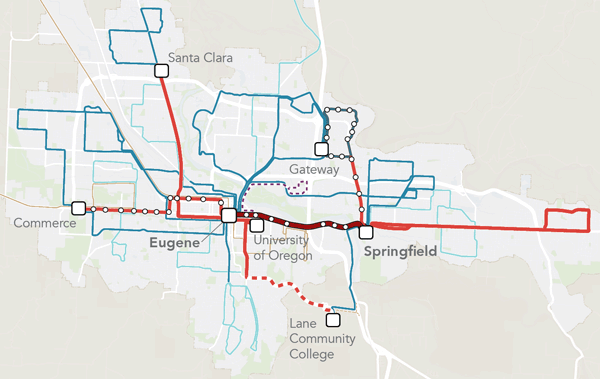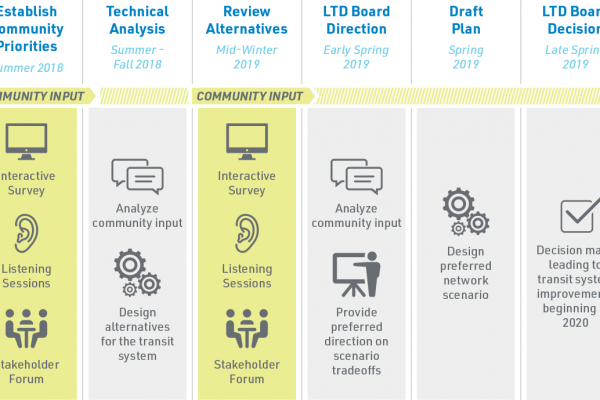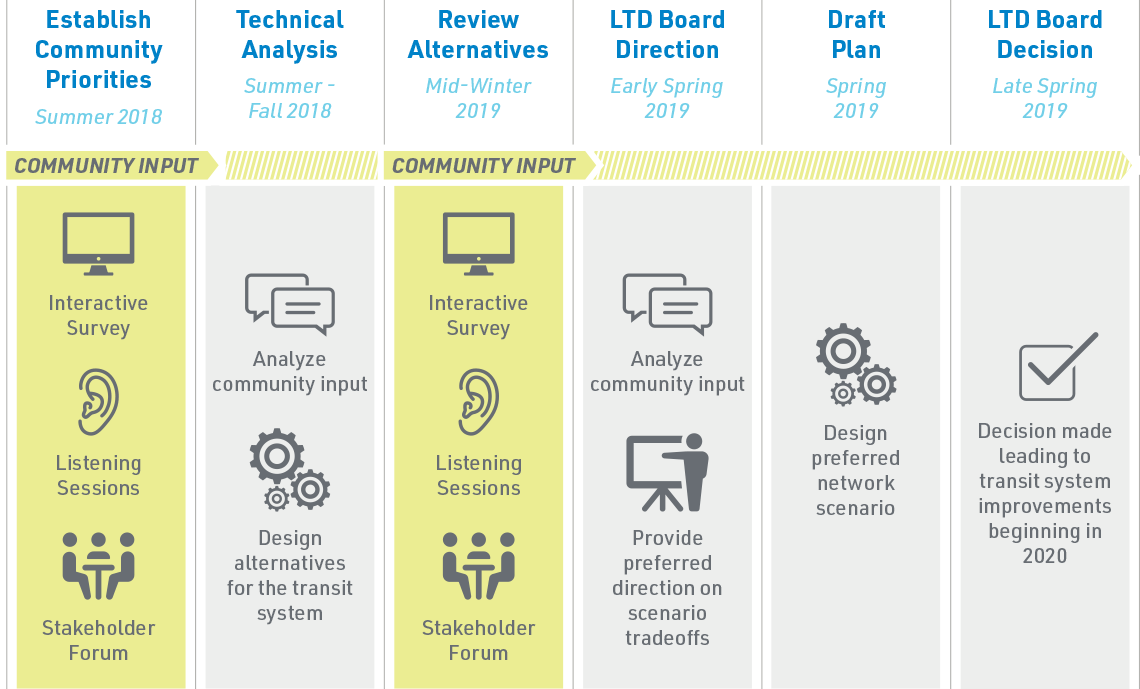This site is currently closed to new comments, however you can continue to follow the project and submit comments though the project website.
Visit the pages on this site using the buttons below or click "Get Started" to move through the information in order.





= Page includes questions or opportunities for comment.
Through this effort, LTD is considering four different scenarios for how service could change based on two major trade-offs:
For more information on the four scenarios and their potential outcomes, you can visit the Transit Tomorrow document library and read the Scenarios Report.
Ridership vs. Coverage
Is it more important to provide frequent service in places that will attract the most riders, or to provide a little bit of service to as many places as possible?
Service vs. Affordability
Is it more important to use new resources to increase service, or to reduce the cost of getting on the bus?
Community input will guide LTD’s decision on these two important questions. On the following pages, we would like you to tell us what you think.
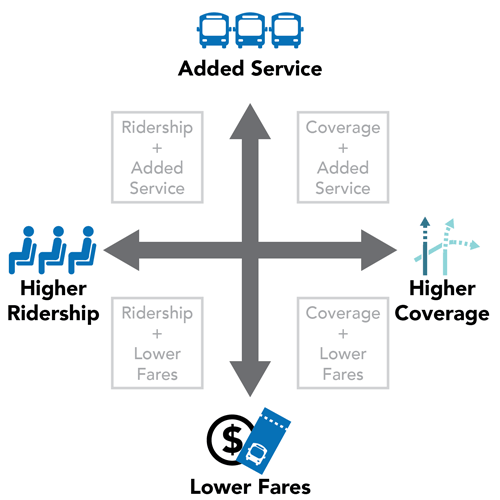
Trade-offs. Where should LTD focus its resources over the next three years?
The following maps show what weekday bus service could look like if LTD focused mostly on ridership, or mostly on coverage. On these maps:
- Red lines mean frequent service, a bus every 15 minutes or better.
- Dark blue lines mean a bus every 30 minutes.
- Light blue lines mean a bus every 60 minutes.
Remember, these maps are illustrations of what is possible, not proposals for actual service changes.
Option: High Ridership Network
(Click to enlarge.)
Features...
- Frequent routes on main streets. Some areas lose service.
- 145,000 residents and 88,000 jobs within a 1/2-mile of frequent service.
- 14% more jobs accessible by transit in 45 minutes or less, door-to-door.
Questions
Ridership or Coverage?
Which of these two possible networks best matches the bus service you would like to see in Eugene and Springfield?
LTD will soon start receiving new funds from the Statewide Transportation Improvement Fund (STIF).
Prior community input suggests two main uses for these funds: more frequent service on weekends, and reduced fares. But, the more money we spend on service, the less we can reduce fares.
Note that LTD is already considering expanding its low-income pass program, and introducing a youth pass to eliminate fares for school-aged children.Option: More Service
If LTD focused only on adding service...
- Weekend service would increase by 50%.
- Most routes would operate at the same frequency, 7 days per week.
- Fares probably wouldn’t change much.
Option: Lower Fares
If LTD focused only on lowering fares...
- The cost of the average fare or pass would decrease by up to 50%.
- This could mean a lower regular fare and more discounts for students, seniors, people with disabilities and people with low incomes.
- Weekend service wouldn’t improve from current levels.
- All routes would operate less frequently on weekends than on weekdays.
Questions
More Service or Lower Fares?
Which of these two options is more valuable to you?
Process Overview
Next Steps
- A stakeholder and public engagement effort will gain input from the community on the scenarios and key trade-offs.
- Based on community input, the LTD Board of Directors will direct the Transit Tomorrow design team to develop a proposed network for the next three years.
- A draft of the proposed network will be presented to the Board in late spring.
- If the proposed network is very different from LTD’s current service, you may see significant service changes starting in fall 2020.
Final Questions
(All of these questions are optional.)
Demographic Information (Optional)
Help us understand who is answering this survey! By answering the optional questions below, you can help LTD know whether this survey has reached a representative cross-section of the community.

